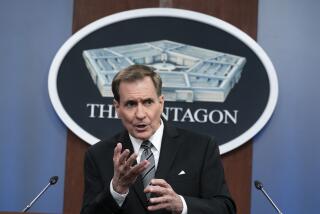Space Shuttle Post-Mortems
- Share via
In spite of Edwin Yoder’s apology (Editorial Pages, March 14) for human fallibility, ergo NASA, I must agree with commission Chairman William Rogers that the process by which the decision to fly the shuttles is flawed, but not for any reason I’ve heard put forth to date.
The process is flawed because of a missing critical element. That element is one long discarded because it is not considered cost-effective. That element is the air crew member with responsibility for knowing the history and condition of the aircraft and authority to veto flying if the risk was not acceptable. When flying was in its infancy, the pilot alone accepted blame for what went wrong. Later, as aircraft became more complex, the flight engineer, a licensed A&E; (Aircraft and Engines) mechanic and a regular crew member, filled that vital role.
Next to the actual destruction of Challenger, the biggest surprise for me was the surfacing of the astronauts, claiming “foul.” They contributed to the disaster by remaining aloof, every one of them, from the nitty-gritty of probing the weaknesses of the system and keeping themselves informed of the day-to-day routine and non-routine of pre- and post-flight operations.
The flight engineer of yesterday was not infallible. But it was always reassuring to look up from my station before engine-start and see him engaged in earnest conversation with the pilots, reviewing his final appraisal of the aircraft’s condition vis-a-vis the day’s test mission, the weight and balance situation, the elements of the performance envelope to be stressed by the exercise head, who was on board and where they were stationed, etc, etc. It was very comforting to know that someone who had taken time to know all the life-determining parameters was flying with us. Sometimes we didn’t go.
LOUIS M. ST. MARTIN
Pomona
More to Read
Sign up for Essential California
The most important California stories and recommendations in your inbox every morning.
You may occasionally receive promotional content from the Los Angeles Times.













